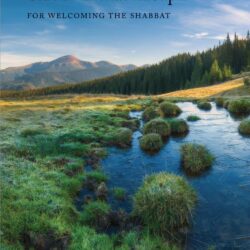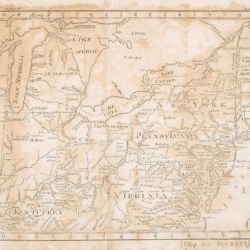Download:
Seder Birkat Hamazon (version 0.2.5, July 2013): ODT | TXT | PDF
Beginning in November 2010, I began a project to translate the Birkat Hamazon using Rabbi Simeon Singer’s English translation and the Nusaḥ ha-Ari as the basis for publishing a new birkon (plural, birkonim, or in Yiddish, benchers). The original work was sponsored by the Teva Learning Center and its executive director, Nili Simhai, to be used in birkonim specifically designed for use during weekdays during Teva’s Fall season. Fellow Teva educator, Marta Buechler helped edit my initial work checking to make sure I used age appropriate language. Late in the season, during a meeting with Nili and fellow Teva instructor and master artist Rachel Katz, I introduced the kirigami pamphlet layout taught me by Olivia Antsis and which I used for publishing the Open Siddur Project manifesto (presented at the Academy for Jewish Religion’s 2010 Spring Intensive).
One of the wonderful things about working with creative people is how they will immediately see invention at work and latch upon an opportunity. Nili immediately saw how a hidden surprise could be printed on the reverse of the birkonim, and Rachel Katz volunteered to illustrate the idea of “Ḥesronan” (lit. lacking) — the idea that all the living creatures in creation are formed lacking, or in other words, with needs. It is an essential concept in understanding how the One is expressed through the interconnectedness and interdependence of the many — in all the manifold multiplicities of living relationships between the creatures we share our Earth with. The Teva birkonim would thus emphasize the blessing, “borei nefashot” and highlight this important idea central to Judaism and basic ecology.
To make the birkonim, I copied the text of the birkat hamazon graciously transcribed and shared by Shmueli Gonzales and set it side by side with my translation. In order to position the text properly to make a pamphlet that opens right-to-left and with text always facing rightside-up, it’s necessary to position the text carefully, and in places, upside down. As the Open Siddur web application and its layout capabilities are not yet mature I had to use the proprietary (and expensive) Adobe Illustrator ME application to layout the text and images on an 11×17 tabloid template.[1] Scribus (as of v.1.4) is an open source application which should, in the future, provide many of the features of Adobe Illustrator and InDesign but it currently does not well-support bidirectional text and Hebrew with correct diacritic positioning. These fixes are planned for Scribus v.1.5. See the images below for reference.
Teva Learning Center printed a limited edition print of 100 birkonim for use and review at the 2011 Teva Education Seminar at Surprise Lake Camp in Cold Spring, New York. These beautiful prints were made by Greg Barber Co Environmental Paper & Printing, a green printer in northern New Jersey, and for the most part all taken home by seminar attendees.
With some variations (and corrections), my parents sponsored a small run of another limited edition of the birkonim for my nephew Yair-Shalom’s bar-mitsvah. My mother contributed an original sketch of one of my nephew’s winning chess matches to grace the cover of the birkonim. I took some pictures to document the process. The materials for making your own birkonim, including my translation are available below, and there are many other resources shared on the Open Siddur Project site you may wish to include in your own birkonim.
If you’d like a print of your own birkon prepared by yours truly, please make a donation of at least $18 for the Open Siddur Project and support our efforts to revive the Jewish book arts tradition, and keep content free for Jewish crafters. If you’d like my help customizing the birkon you’ve always wanted with a different nusaḥ or an adapted translation, please let me know. (All contributions to the project are tax deductible by virtue of our fiscal sponsor, the Center for Jewish Culture and Creativity, a 501(3)c registered non-profit.) Alternately, support the Teva Learning Center and mention your love for the Open Siddur Project with your donation.
Note: These birkonim are adapted for weekday use only, and only include the liturgy of the birkat hamzon for weekdays, Rosh Ḥodesh, and Ḥanukkah. Rachel Katz is currently working on a slightly revised version of the image above with hand lettering of the Hebrew for the borei nefashot blessing. All of this work is shared with a Creative Commons Attribution/ShareAlike (CC-BY-SA) 3.0 Unported license, permitting you to adopt, adapt, and redistribute the work so long as it is correctly attributed and any derivative work also shared with the CC-BY-SA 3.0 Unported license.
See below for documentation of the folding and cutting of 11×17 sheets into an 8 (or 16) page pamphlet.
While it’s possible to fold and cut sheets entirely by hand, when birkonim are printed on cardstock (as these were), it’s very helpful to use the following tools to craft nicely folded pamphlets.
- 1 Bone Folder
- 1 Metal Ruler with non-slip backing (as a straight edge)
- 1 light exacto knife
- 1 Cutting Mat
- “Borei Nefashot Rabot v’Ḥesronan” by Rachel Katz (CC-BY-SA 4.0 International)
Notes
| 1 | Scribus (as of v.1.4) is an open source application which should, in the future, provide many of the features of Adobe Illustrator and InDesign but it currently does not well-support bidirectional text and Hebrew with correct diacritic positioning. These fixes are planned for Scribus v.1.5. |
|---|

“How to craft a small siddur or bentsher by Aharon Varady” is shared through the Open Siddur Project with a Creative Commons Attribution-ShareAlike 4.0 International copyleft license.





























Absolutely beautiful-I will be sharing this with many friends